Whilst there is no defined language of budgets, generally most professional retail businesses will have a number of different budgets for the various functions of the business.
Usually there will be a master budget that is high-level and encompasses all of the budgets to give a company-wide view of the organisation’s financial budget.There will also often be an integrated suite of budgets comprising:
- Operating budgets – for production / service delivery
- Expense budgets – for significant support functions
- Financial budgets – for capital expenditure and cash flow
Retail store managers are most commonly responsible for the preparation of sales budgets and in this section we address how managers can effectively present and report on the budgets for which they are responsible:
- Present budgets and targets
- Explain and justify budget variations
- Ensure accuracy of budget reporting
Present budgets and targets
The development of sales budgets is a significant task for retail mangers and they benefit from the support of key financial officers within the business to ensure they are adhering to business and accounting directives. Part of the process is to present budgets and targets for final approval.
In large organisations the CFO (chief financial officer) or Finance Manager reviews departmental budget before submitting them to the CEO (chief executive officer).
The CFO’s role is to:
- Ensure departmental expenses fall within budget
- Question any proposed additional expenditure
The CFO will generally refuse any budget that proposes overspending the allocated percentage unless there is a very strong business case for the extra expense. A departmental or store manager will commonly have to negotiate in order to gain approval. Depending on the economic climate, and trends in the industry, the CEO may elect to reject additional expenditure even when the justification has passed the CFO. All business expenditure must fit within the overarching business directive.
Explain and justify budget variations
Budget variations are areas where actual performance has varied from that expected and projected in the initial budget. Discrepancies between actual and budgeted expenditure are called variances.
There are two types:
Unfavourable variances
- Increased expenditure without a comparable increase in output marked ‘U’ on the budget report.
Another method of reporting this variance is with the use of the minus symbol (–).
Favourable variances
- Increase in output without a comparable increase in expenditure, marked ‘F’ on the budget report.
Another method of reporting this variance is with the use of the plus symbol (+). A variance may be caused by budget errors or unexpected events. In these cases it may be necessary to request a budget review.
Vertical and horizontal analysis
Retailers will often review variances to budget both vertically and horizontally; in other words they will look down the budget to determine where the variances occur and they will also look across the budget to see where variances occur.
Ensure accuracy of budget reporting
Budget reporting procedures vary according to the size and type of organisation and according to budgetary policies and procedures. In some cases, budget reports require monetary figures, such as the total value of products sold and others require quantities such as the number of products sold in different categories.
The content of a budget report will vary according to:
The audience for the report
This could be:
- Departmental staff
- The finance department
- The CFO
- The CEO
The information required
This could include:
- Past, predicted or actual revenue or expenditure
- Cash or sales to date
- Purchases or inventory
- Profits
- Other items depending on the activities of your department and the information required by the audience
Organisational formats for reports
These may include:
- Text
- Tables
- Graphs
When preparing budget reports for review it is helpful to become familiar with the requirements for reports and past examples of similar reports to establish an understanding of the format and content required. It is important to prepare reports carefully, checking figures and calculations more than once.
The ARA Retail Institute houses a suite of both accredited and non accredited training solutions; from the Diploma of Retail Management to customised in-house training programs. Click on the link below to explore some of our latest workshops.
{{cta(‘7e82b0b3-ef0c-4151-8e7c-7a9d592d6e31′,’justifycenter’)}}
About ARA Retail Institute
ARA Retail Institute is Australia’s leading retail training provider for both accredited and non-accredited learning programs. For more information, please visit: www.retailinstitute.org.au






















